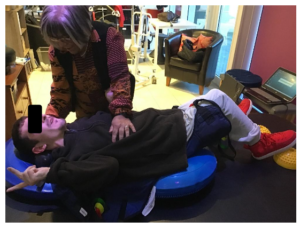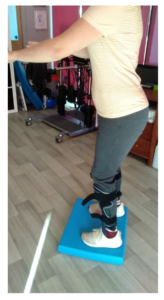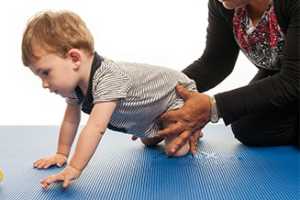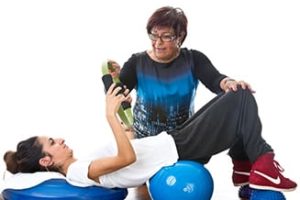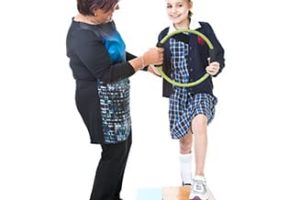Cerebral Palsy (CP) is often considered a paediatric condition, but it is a lifelong disorder that impacts individuals into adulthood. As children with CP transition into adolescence and eventually adulthood, they face unique challenges that differ from those in their early years. Understanding these transitions is crucial for proper care, support, and a fulfilling life.
Childhood: The Foundations of Care and Independence
Children with CP are usually diagnosed in infancy or early childhood. During this time, the focus is on managing physical limitations (like motor difficulties, muscle stiffness, or coordination issues) and developing early interventions such as physical, occupational, and speech therapy.
Growth is constant, so intensive therapy and surgical interventions (such as muscle or tendon releases) are common in this phase. Orthopaedic issues like scoliosis and joint dislocations may develop, and early intervention with physiotherapy and a great plan of positioning is crucial for mobility. Equipment and daily/regular physical exercises help families and children overcome this phase with less impact.
When discussing social and emotional development, children may become aware of their differences from peers, which can affect self-esteem. School environments must be inclusive to promote social interaction, education, and a sense of belonging.
The parents play a critical role in managing medical appointments, advocating for their child’s education, and helping the child develop independence.
Adolescence: The Transitional Period
Puberty brings physical changes that can exacerbate motor function issues, pain, and fatigue. Adolescents with CP often experience increased muscle stiffness and a decline in mobility due to rapid growth, which can sometimes undo the progress made through early therapy.
Adolescents with CP, like their peers, strive for independence, but the physical limitations of CP can complicate this. They may feel frustrated or isolated if they cannot engage in the same activities as their peers.
Mental concerns eventually will arise during the teenage phase. Depression and anxiety can occur due to social isolation or self-esteem issues, especially if teens feel different or “left out” compared to able-bodied peers.
Social transition is happening all the time during this phase. Adolescents with CP face the same educational challenges as other people without CP. The educational and career milestones are the same for every individual and a transition planning for life after school becomes essential.
Relationships and sexuality topics may appear and bring up questions about how they will enjoy and/or create intimacy with someone. Teens with CP may feel uncertain about body image and mobility which will impact their confidence and desire to explore this part of their life.
Adulthood: Independent Living, Health Decline, and Long-Term Care
We all age. Unfortunately for people with CP it may start earlier. It can occur before expected due to their life habits/level of mobility during childhood and adolescence.
According to the levels of GMFCS, we can have an idea of how early it will start. If the person with CP is level V, being completely dependent, they can show even earlier signs of ageing.
Why does this happen? The reasons are: first, they did not develop typically and were not as active as the level I of CP for instance. Consequently, they will show some bone, joint and muscle issues as well as respiratory concerns. Second, due to the lack of mobility, they will increase their stiffness or joint hypermobility being susceptible to pain and discomfort.
Many adults with CP develop secondary health issues such as chronic pain, fatigue, osteoporosis, or cardiovascular problems earlier than able-bodied adults. Managing these conditions alongside CP becomes a significant part of adult care.
Long term physio is vital for people with CP, some lose interest after a while and feel a sense of loss of hope and progress as there is no cure for the condition but at Birkdale we believe we can improve everyone’s quality of life to some degree, no matter how severe their condition is.
We have treated numerous adults with CP, in all the GMFCS levels and different concerns. They all benefit from coming to physiotherapy. Our assessments are thorough and focused on everyone’s concerns, expectations and personal goals.
Farshideh Bondarenko, the director of Birkdale, has been working in the field for over 45 years. She brings a wealth of experience and shares her knowledge with parents, colleagues, and the individuals who use our services.
One notable example is “S”, a patient with CP whom Farshideh has known since “S” was 2 years old. Now 36, this patient has been a part of our clinic for over three decades. Farshideh has supported this patient through lots of significant life milestones, including starting university, securing her first job, getting married, and even navigating pregnancy and giving birth to her baby.
“S” has navigated all these major events in her life and overcome obstacles.
Little is known about how women with cerebral palsy (CP) manage pregnancy, hormonal changes, and the added difficulties of carrying a baby while living with diplegia. Farshideh and S. are working to address the new health concerns that have emerged following the nine months of pregnancy and recent birth. Together, they are determined to overcome any obstacles that may arise once again.
Andrea, a physiotherapist who joined Birkdale less than a year ago, has been enthusiastic about the progress we can achieve with adults living with cerebral palsy (CP). Andrea is currently treating L., a 31-year-old with dystonic CP, classified as GMFCS Level 5. His case is particularly challenging due to his severe and unstable dystonia, which causes significant stiffness, discomfort, and pain. However, in less than six months, we have seen remarkable progress, including reduced dystonia and improved trunk and head control while sitting. Initially, L. was sceptical about seeing results from physiotherapy at this stage of his life, but to everyone’s surprise, his eye movements have improved with eye fx games. This has contributed to further reductions in dystonia, allowing him to sit with less support for longer periods and demonstrate greater neck and trunk control despite the dystonia. L. is pleased with his progress, and we are now setting new goals for the coming months.
At Birkdale, we believe that everyone with CP can improve their quality of life in some way. If you are interested in learning more about our work, we invite you to come for an assessment. Together, we can discuss the possibilities and develop a personalised treatment plan based on your concerns and goals.

